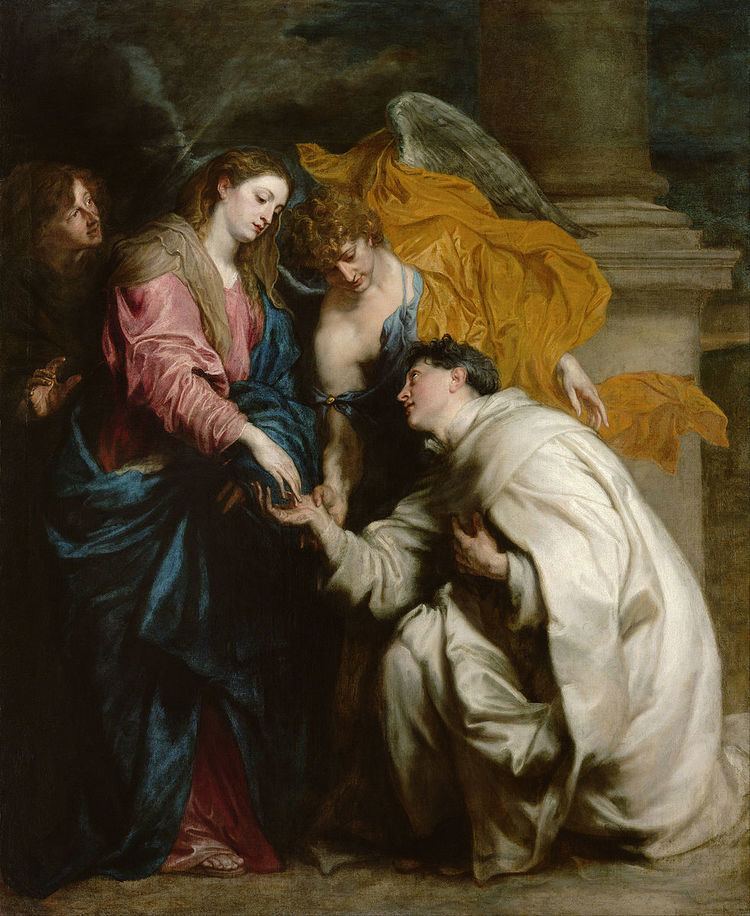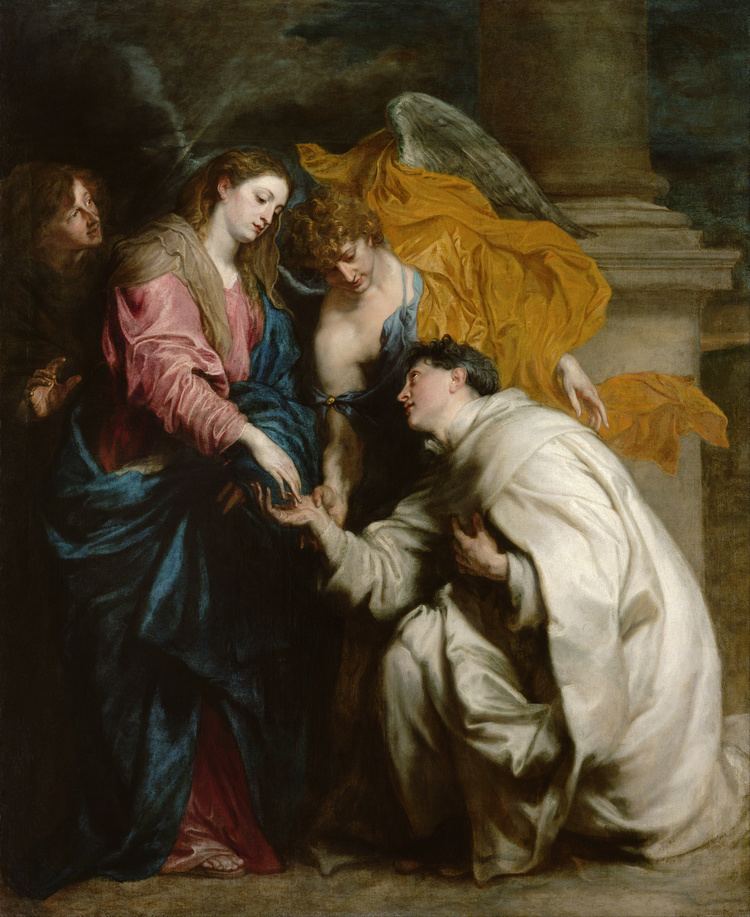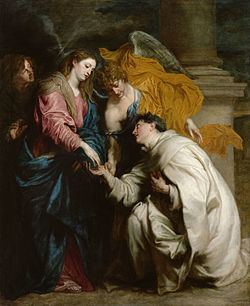Feast 24 May | Patronage Children and students Name Hermann Joseph | |
 | ||
Canonized 11 August 1958, Vatican City by Pope Pius XII Died April 4, 1241, Zulpich, Germany | ||
Venerated in Roman Catholic Church | ||
Apr 07 - Saint Herman Joseph - Marian - Priest - 1241 - Hoven
Saint Hermann Joseph, O.Praem., (ca. 1150 – 4 April 1241) was a German Premonstratensian canon regular and mystic. Never formally canonized, in 1958 his status as a saint of the Roman Catholic Church was formally recognized by Pope Pius XII.
Contents

Life

He was born in Cologne. According to the biography by Razo Bonvisinus, a contemporary and prior of Steinfeld Abbey (Acta Sanctorum, 7 April, I, 679), Hermann was the son of noble but poor parents. At the age of seven he attended school and very early he was known for devotion to the Blessed Virgin. At every available moment he could be found at the church of St. Mary on the Capitol, where he would kneel wrapt in prayer to Mary. Bonvisinus claims that the boy once presented an apple, saved from his own lunch, to a statue of Jesus, who accepted it. According to still another legend, on another occasion, when on a cold day he made his appearance with bare feet, Mary procured him the means of getting shoes.

At the age of twelve he entered the abbey of the Premonstratensian (more commonly known as Norbertine) Canons Regular at Steinfeld. As he was too young to be accepted into the Order, he was sent to make his studies in the Netherlands. Upon his return, he made his vows and was given the habit. As a novice, he was entrusted initially with the service of the refectory and later of the sacristy.
After his ordination, Hermann was sometimes sent out to perform pastoral duties and was also in frequent demand for the making and repairing of clocks. Late in his life, he had under his charge the spiritual welfare of the Cistercian nuns at Hoven, near Zulpich, whom he served as chaplain. There he died and was buried in their cloister. His body was later transferred back to Steinfeld, where his marble tomb and large picture may be seen to the present day; portions of his relics are at Cologne and at Antwerp. He is represented in art as kneeling before a statue of the Virgin and Child and offering an apple.
The process of his canonization was begun in 1626, at the request of Archbishop Ferdinand of Cologne and the Emperor Ferdinand II, but was interrupted. His feast, however, continued to be celebrated on 4 April, by the members of his Order and the name of Blessed Hermann was listed in the Premonstratensian supplement to the Roman Martyrology. They also celebrate the translation of his relics on 24 May.
His status as a saint was confirmed by Pope Pius XII in 1958. (The Salvatorian Fathers, who had come to occupy the abbey in Steinfeld in modern times, opted to perform this less costly and involved process—known as Confirmatio Cultus—rather than to carry out a full canonization process.) His current feast day on the calendar of the diocese of Cologne is 21 May.
Works
His works are: "A Commentary on the Canticle of Canticles", which is lost; "Opuscula" (new edition, Namur, 1899), including: "Duodecim gratiarum actiones"; "Jubilus seu Hymnus de SS. undecim millibus Virginibus"; "Oratio ad Dominum nostrum Jesum Christum", taken to a great extent from the Canticle of Canticles; "Alia Oratio"; "Precula de quinque Gaudiis B. Mariae V." It is not quite certain whether the last three are the works of Hermann, though they are generally ascribed to him.
